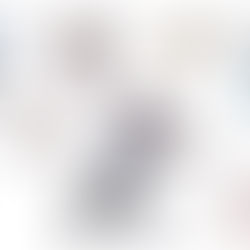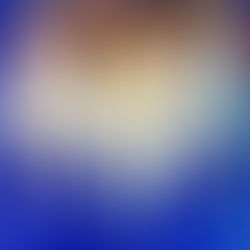TIME-LAPSE PAINTING: "Clap if you believe in Zombies"
- Sabbas Apterus (2016) / Freelance illustrator and
- 27 nov 2017
- 5 Min. de lectura
His art and style impressed us, and we wanted to showcase his works in our magazine. We are happy he agreed to that and to this interview.
Iulian: Tell us a little bit about yourself: where did you grow up and how did your early life influence your future as an artist?
Apterus: Hello, my name is Peter, a.k.a Apterus. I am from Slovakia and I aspire to be a concept artist and illustrator. I enjoyed drawing since my early age. Almost half of my family members do some creative thing or another, so they supported my hobby and somehow expected that I will be creative as well. Drawing was the easiest thing to do, and most importantly, I could do that during lectures at school and didn’t get noticed. I occasionally represented my high school in amateur art competitions, and as some kind reward I was allowed to draw during class and not be bothered as long as I got my tasks done.
I attended the Academy of arts in Banska Bystrica, Slovakia for six years, where I had an opportunity to create my own art on a higher level, mostly traditional graphics and hyper realistic sculpture. I learned much about art, its history and contemporary trends, but almost nothing about the kind of digital art I am doing at the moment, so I am starting all over again. After graduation I started to work in game design and improving my skills.
What are your favorite design tools and how did you learn them?
I use Adobe Photoshop for the majority of my work. At first I used Photoshop just like any other amateur, as a tool for adjusting photos or creating some very simple drawings, having no clue of its full potential. At college I learned all the advanced techniques, although I never came to contact with the freehand digital painting, because our lessons were focused on use in commerce, product design or photo manipulation. I bought a tablet only recently and in my advanced age (I’m 26) I began to do digital painting.
Are there any other artists out there that you admire and whose work has helped shape your work?
There are many that I admire. Some for their vision, originality, others for the use of their skills. I am following my favorite artists on various forums and trying to learn as much as I can from them. If I have to choose a few names, they would probably be Sergey Kolesov, Marc Brunet, Jae Cheol Park, Fenghua Zhong, or Martin Carlsson. Their work inspires me to try harder and become better.
Where do you find inspiration?
Sometimes I focus on the subject; sometimes the technique and experiments lead me to the final result. My goal is to be able to depict the atmosphere and the feeling that I want to be dominant in each piece. I focus on fantasy and sci-fi, because there are no boundaries of what should be done and how should it look like, when we are talking about simple figurative subjects, of course.
So my inspiration lies in my imagination (which is of course hugely affected by the imagination of others), usually as a sudden glimpse of an image that I later decide to improve. Sometimes even one line is enough as a foundation of the whole concept and the general feeling I want the image to emanate, other times it requires a long period of planning.
How would you break down your workflow in steps?
The most important thing is to create a concept, even for a simple painting practice. To put it simply, I need to know what am I doing before I start. It doesn’t matter if it is a result of a week of planning and sketching, or a split-second glimpse of inspiration. I just need to understand the thing I am doing.
The next thing is to update my knowledge of the subject. If there is a material that I never tried to paint, or a pose, or anatomical detail that I am not familiar with, I look it up, or sometimes, when the scene is too complicated, I make a dummy in 3D software that I later use as reference.
Then I draw a simple sketch, paint lights and shadows, adjust the composition, until I have a solid black and white foundation for the piece. Then I add colors and continue using everything that I did up to this point as a background and palette for the final piece, which I am building over it. I like when each stroke has its own color value, it feels more solid rather than a blurry color overlay over a black & white picture, because that is exactly how it looks like if done that way.
Finally, I do a few final touches, for example, adding glow, adjusting the color values and contrasts. Basically all the Photoshop work that is needed to make an existing image better.
Your work is very fantasy-driven. What drives you to that subject?
As I said, mostly the freedom and that the subject can be anything. Fantasy and sci-fi themes have been a part of my life for a long time. I enjoyed books, movies and computer games to the point that reality became boring and I found myself often fantasizing about other worlds, so naturally, I began to draw it. At college I focused strictly on issues that affected everyday life, and as a pessimist, my work was quite macabre.
If there was one piece of advice you could give to other beginning artists, what would that be?
Get noticed. Sometimes is more about your social skills than the quality of your work. Create profiles and portfolios on as many image sharing sites as possible and be active there. Allow strangers to tell you their opinions of your work, comment on other artists works and always compare yourself with the best there is. This could be big pain, especially if you are not a social person, but it is very important to be active part of the community. And, of course, never be satisfied with your knowledge and skills.
We selected one of your pieces for the cover of our magazine. Tell us a few words about how that piece came to be.
It started as a simple painting practice for which I chose an armored female robot character in a simple pose on an undefined background with lights. There is really nothing more behind it, it was just enjoyable making this picture. I was quite satisfied with the result and I was learning much about the technique, so I continued and the practice became a work of an illustration. In the spirit of dissatisfaction with oneself and it being my favorite picture, I decided to re-make it. I remodeled the figure, changed the pose a bit to make it more fluid and natural, replaced the hair, which was a goofy looking ugly mess, with something that resembles actual hair a bit more…
It was fun to see, comparing both the original picture and the remake, how much I improved in a few weeks. I’ll probably repeat the process soon.
ARTSTATION https://www.artstation.com/artist/apt...
INSTAGRAM https://www.instagram.com/sabbasapterus/
DEVIANTART http://apterus.deviantart.com/
CGSOCIETY http://apterus.cgsociety.org/
DRAWCROWD http://drawcrowd.com/apterus











































